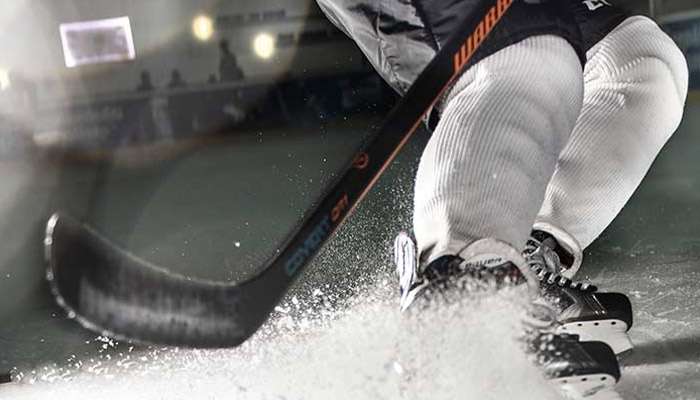The weather is getting cold and that can mean only one thing – hockey season is upon us! As hockey has become more and more popular in the United States, hockey injuries are becoming more common. While it’s impossible to completely avoid injury all the time, taking precautions before and during the season can make it easier to avoid common hockey injuries.
Due to the speed and physical nature of the sport there are several common injuries including concussions, shoulder, elbow, wrist, back, knee, and hip injuries. All of which can end a season in an instant and cause lasting issues. Here are some great ways to keep your body in top shape and make sure you start and finish your season without injury.
1. Physical exam
While most school-based teams require a physical exam before the season, club teams and recreational leagues typically don’t. It’s important to visit your doctor or a qualified athletic trainer in order to determine your fitness to play. Far too often athletes forego this preseason screening which causes greater problems during the season. The physical exam was created in order to determine if your body is in the proper shape to be able to take the beating that the sport will place on your body. If something is found during this exam that can cause major problems later, it’s better to know now and start a rehabilitation program to get into the required shape to participate.
2. Conditioning
Conditioning is important to any sport, but especially important to hockey players. Depending on the position and equipment choices, the average hockey player is carrying around an additional 10-30 pounds of equipment. While that may not seem like a lot of extra weight, it can have a major impact on your body during a game. Focusing now on your conditioning will ensure you can perform at your best and will help you avoid injuries due to fatigue.
3. Equipment
In hockey, maybe more than any other sport, the proper equipment is vitally important. Ensuring you’re using high quality, reliable, and well-fitted equipment is paramount to avoiding injury. Using worn out equipment or equipment that is too small is just setting yourself up for injury. Take this seriously and do your research on everything from your shoulder pads to your gloves. You’ll be glad that you did. Spending a little more and doing a little more education may be the difference between a major injury and an injury free season.
4. Education
This is especially important for younger athletes. Making sure that they have a good understanding of the rules, regulations, and the sport in general can help them avoid injury. Taking the time, whether you’re a parent or coach, to teach the fundamentals and rules will set these young athletes up for success now and in the future.
5.Off-ice treatment
If you’re part of a competitive league, you probably take your craft and sport very seriously. The problem that we frequently see is that when on the ice, athletes are all business and take the game very seriously, but when off the ice they’re not taking their recovery as seriously. Between workouts in the gym and on ice time, you’re putting your muscles and joints through a lot of stress. Check out our blog post on muscle recovery for the student athlete to learn more about how you treat your off ice time can make or break your season.
Also, check out our recovery product line that is designed to help your muscles recover faster so that you can keep performing at your best all season long!
6. Strength training
Strength training is a little different for each athlete, but we recommend focusing on the high risk muscles for injury in hockey including shoulders (military press and even holding a pushup position), lower back (kettlebell exercises), knees (squats and quadriceps focused exercises), and hamstrings (squats and even focusing on calf exercises). The stronger you can make these muscles and joints, the less likely you’ll be to injure these areas.
As a side note, don’t solely focus on these areas. It’s important to properly train your entire body for best results. We just recommend focusing on these areas first.
Hockey players are known as the some of the worlds’ most rugged and tough athletes, but that doesn’t mean that you shouldn’t do everything that you can to avoid pain and injury. Though it’s not as sexy of a topic, it’s important to focus on injury prevention as much or more than training. Remember, you can’t help your team if you’re on the bench with an injury. Ready to start taking your prevention seriously? Download our FREE Day-to-Day Muscle Recovery Checklist!



Leave A Comment